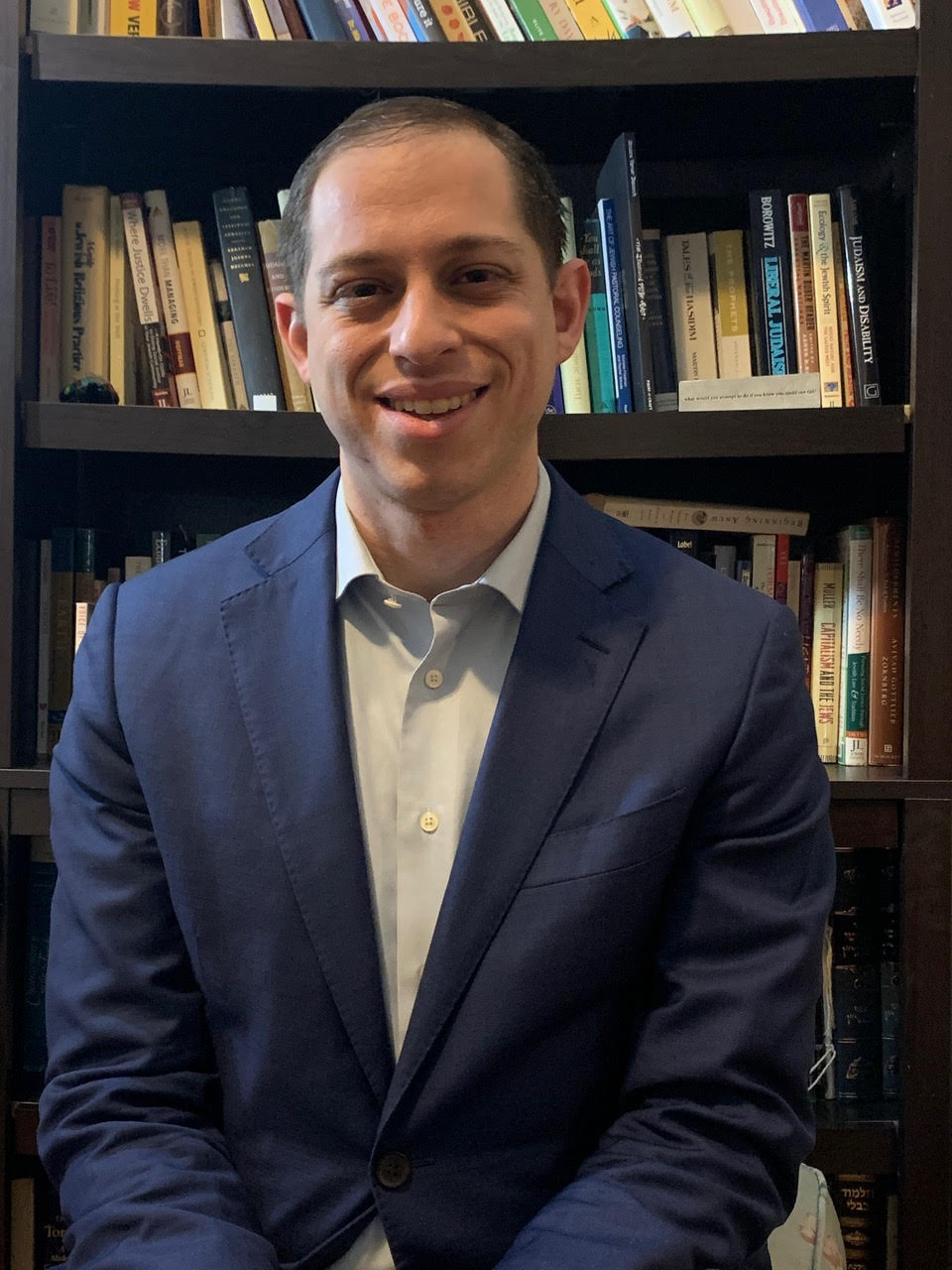We are approaching the holiday of Shavuot, yet another Jewish festival in which we work hard to find our way amongst the limits of our current world. So much of Jewish life these last many months has felt like wandering in a desert. We wish to journey forward, but there is no road showing us the correct way. We move in one direction, and then, with new health data or technical difficulties, we lose our sense of direction all together. It is difficult to become close to each other and to God when we keep losing our way.
The festival of Shavuot is meant to be a moment of clarity and intimacy. We stay up late into the night eager with anticipation for our reenactment of the receiving of the Ten Commandments, our covenant with God. In many Sephardic communities, a traditional ketubah (wedding contract) is read during services, with the names not of two earthly lovers, but of God and Israel. So much of Jewish practice is a journey of winding our way toward holiness, but on Shavuot, in the midst of a flower-filled synagogue, we imagine as if we are standing face-to-face with the Divine. Like a wedding, we make promises to intertwine our lives and to walk together.
There are indeed moments in my Jewish life when I live this kind of encounter of Shavuot—when I feel that I am deeply in God’s presence, that we are simply “on the same page.” It comes to me when I find myself lost in a beautiful prayerful melody during a Friday night service or sitting around a holiday table with family eating delicious food. It comes when I am reading a Jewish text that inspires me, or joining with others to fight for justice. But, perhaps just as often, I experience moments where this clarity eludes me—when I search for connection, but it does not come as easy to me as it might during that Shavuot moment. In these times I am not the lover of Shavuot, but the Israelite searching aimlessly for a Promised Land.
Thankfully, our Torah has guidance for these moments as well. This week’s parsha, Bemidbar, contains detailed instructions mapping how the Israelites will dwell in the desert. Not only do the Israelites need some kind of order to keep their 600,000-member community organized amidst an uncertain journey, but they camp in a specific way, in the honor of their holy ark. At each stop the mishkan, or tabernacle, containing the presence of God, sits in the middle of the camp, with three tribes of Israel located in each of the four cardinal directions among the ark. Each tribe is assigned a particular camping location vis-a-vis the mishkan, and these locations are signified by symbolic flags:
אִ֣ישׁ עַל־דִּגְל֤וֹ בְאֹתֹת֙ לְבֵ֣ית אֲבֹתָ֔ם יַחֲנ֖וּ בְּנֵ֣י יִשְׂרָאֵ֑ל מִנֶּ֕גֶד סָבִ֥יב לְאֹֽהֶל־מוֹעֵ֖ד יַחֲנֽוּ׃
The Israelites shall camp each with his standard, under the banners of their ancestral house; they shall camp around the Tent of Meeting at a distance (Numbers 2:2).
The flags serve as orienting devices, ensuring that every tribe sits in its specific place. Rabbi Shlomo Ben Yitzhak (Rashi) suggests that the flags displayed the colors that correspond with each tribe’s specific gemstone on the priestly breastplate. Like a sports jersey, the colors direct each tribe to their cheering section.
Other commentators, however, suggest that the flags were not significant only for what they signified to their corresponding tribes, but rather for the story they told when seen altogether. Ibn Ezra (11th century, Spain), suggests that each flag has a specific symbol on it, corresponding to a particular tribe: a man, an ox, an eagle and a lion. Not only would these symbols correspond to particular tribal identities, but taken together they paint a specific image of God’s likeness as described by the prophet Ezekiel:
וַיְהִ֣י ׀ בִּשְׁלֹשִׁ֣ים שָׁנָ֗ה בָּֽרְבִיעִי֙ בַּחֲמִשָּׁ֣ה לַחֹ֔דֶשׁ וַאֲנִ֥י בְתֽוֹךְ־הַגּוֹלָ֖ה עַל־נְהַר־כְּבָ֑ר נִפְתְּחוּ֙ הַשָּׁמַ֔יִם וָאֶרְאֶ֖ה מַרְא֥וֹת אֱלֹהִֽים…וּדְמ֣וּת פְּנֵיהֶם֮ פְּנֵ֣י אָדָם֒ וּפְנֵ֨י אַרְיֵ֤ה אֶל־הַיָּמִין֙ לְאַרְבַּעְתָּ֔ם וּפְנֵי־שׁ֥וֹר מֵֽהַשְּׂמֹ֖אול לְאַרְבַּעְתָּ֑ן וּפְנֵי־נֶ֖שֶׁר לְאַרְבַּעְתָּֽן׃
In the thirtieth year, on the fifth day of the fourth month, when I was in the community of exiles by the Chebar Canal, the heavens opened and I saw visions of God . . . . Each of (The Cherubim) had a human face; each of the four had the face of a lion on the right; each of the four had the face of an ox on the left; and each of the four had the face of an eagle [at the back (Ezekiel 1:1,10).
Understood in this way, the flags of the camp are not meant only to help organize the travelers, but for them to collectively form themselves into an image of God. When the tribes camp in this particular way, their bodies together represent Ezekiel’s vision, and together united, the Israelites help each other see the Divine. This interpretation contextualizes God’s lengthy instructions at the beginning of the book of Bamidbar (Numbers). Why does the text go into great detail about this camping map? It is a map to find connection in the uncertainty of a vast desert.

As many of us get vaccinated and more parts of society reopen, we may be finding the edge of the desert. No vaccine can inoculate us from feelings of uncertainty and wandering. On this Shavuot, perhaps we can breath in the moments of closeness and connection we feel toward our tradition. And then, as we leave the holiday and read through our book of wandering in the desert, perhaps this year, we will find ourselves drawn to the structures of our tradition, be they the camping map of the desert or our own sacred practices in which we bring God’s presence into the world.
Tyler Dratch is a rabbinical student at Hebrew College in Newton. This summer, he will become rabbi for Tefilah Leadership at Beth Am Synagogue in Baltimore, Maryland.
This post has been contributed by a third party. The opinions, facts and any media content are presented solely by the author, and JewishBoston assumes no responsibility for them. Want to add your voice to the conversation? Publish your own post here. MORE


